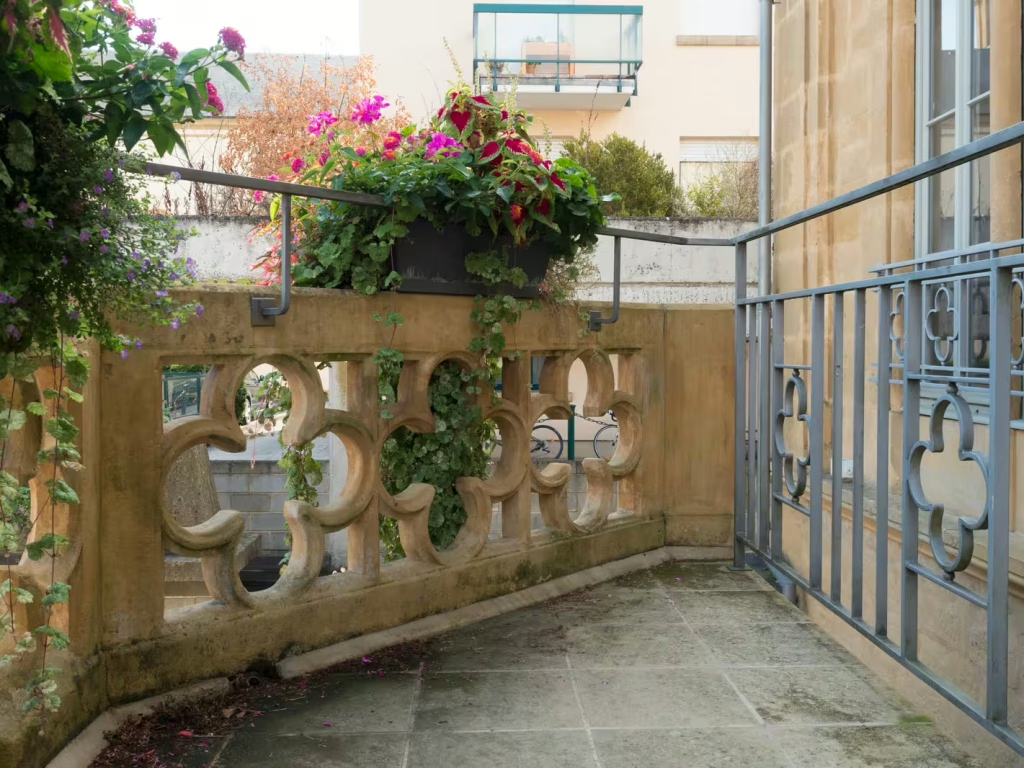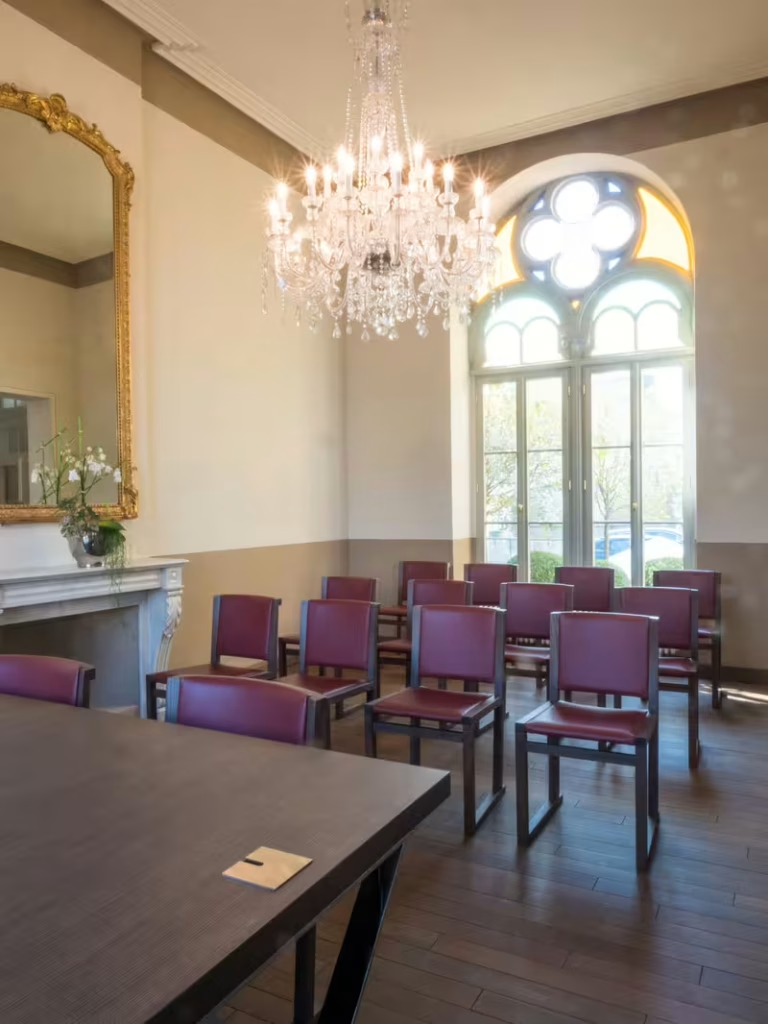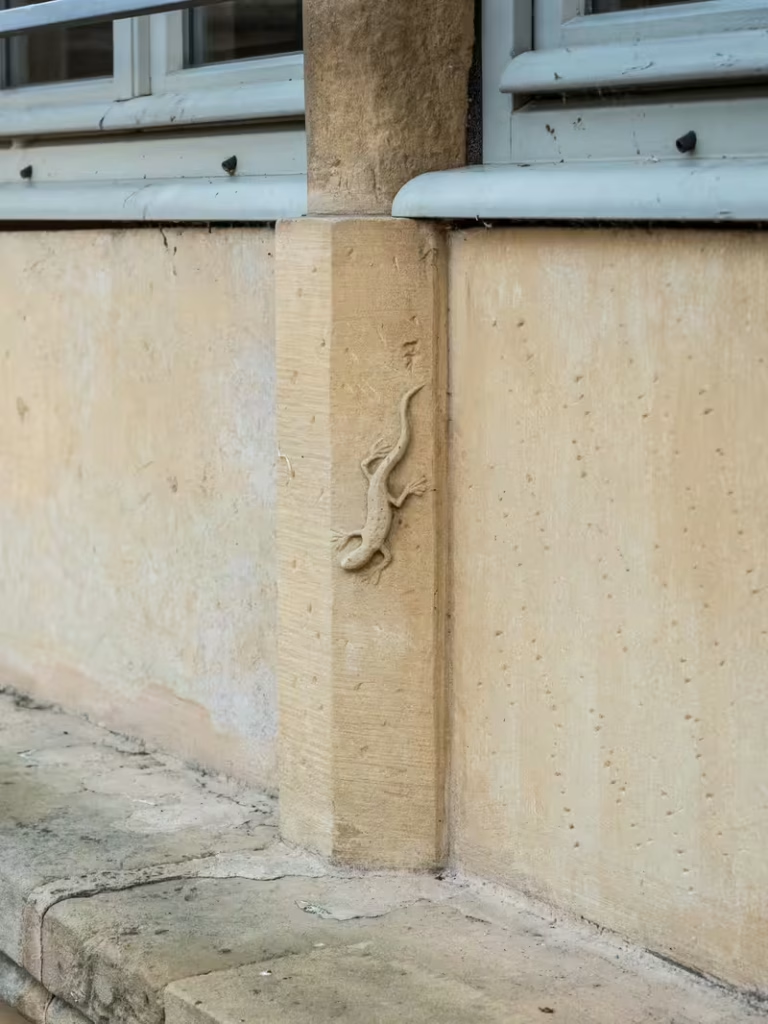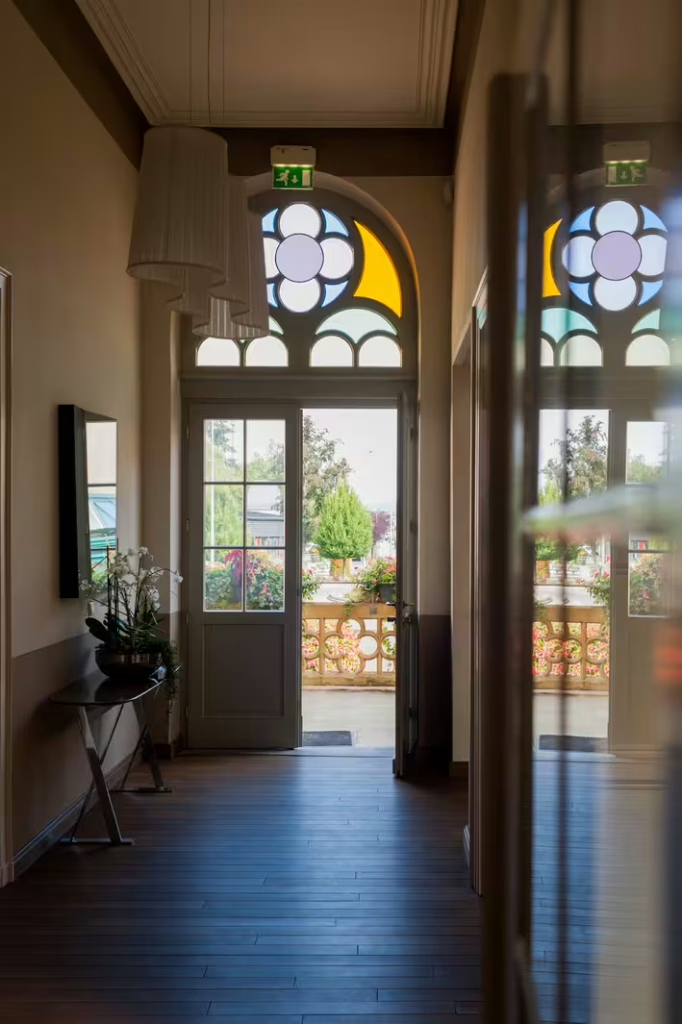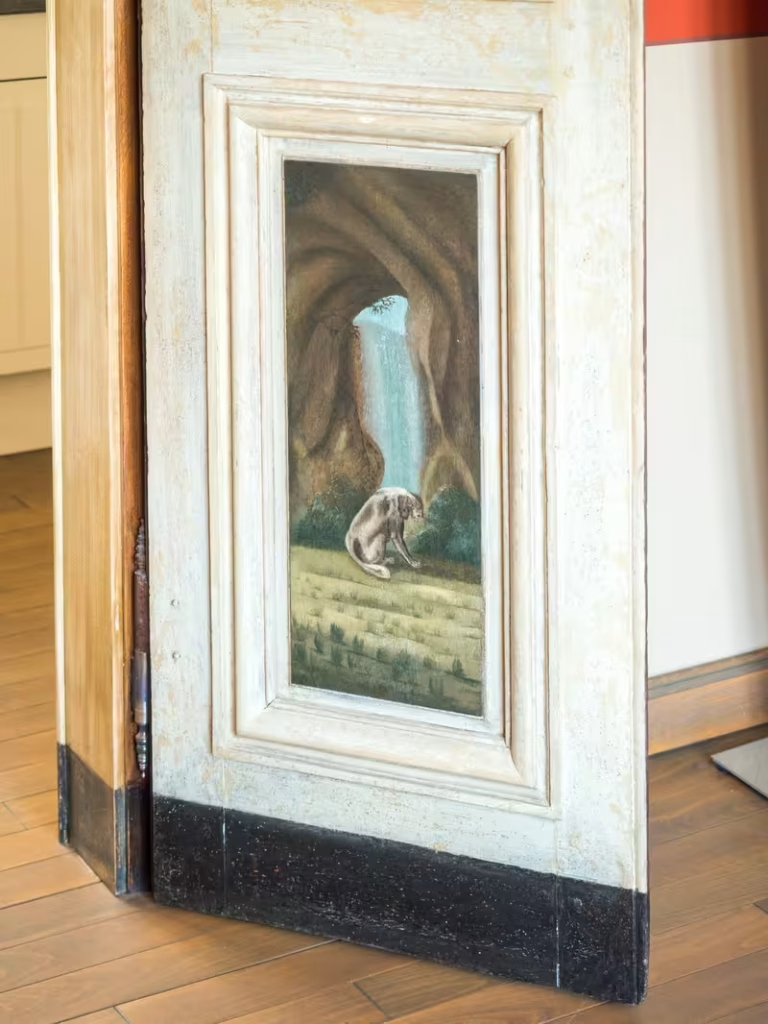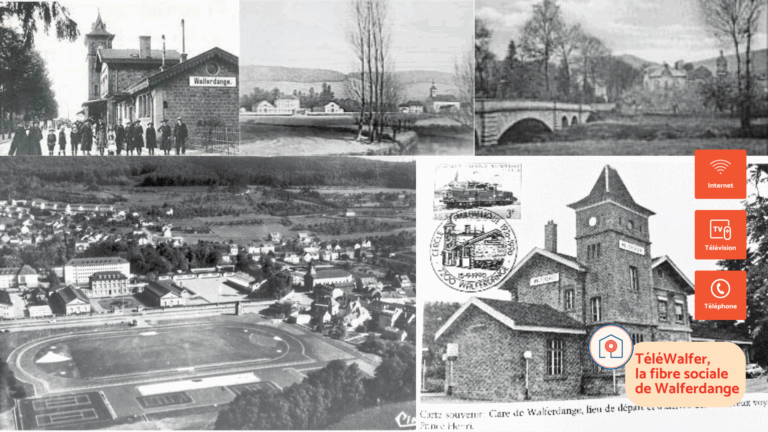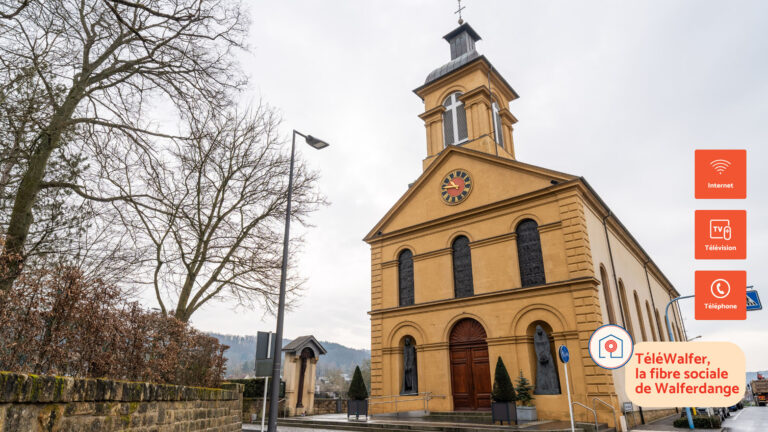A Historic Residence
Maison Dufaing was built in 1852 by the young architect Charles Arendt for Henri Dufaing, a member of the noble du Faing d’Aigremont family, at a time when both the castle and the church had already been built. Henri Dufaing worked in the state administration, and his social standing is reflected in the elegant design of the house. Inspired by medieval architecture, the building features elements of Gothic and Romanesque styles, giving it a distinct and timeless character. Its sophisticated design showcases the success and influence of its original owner.
Architectural Highlights
Maison Dufaing stands out for its symmetrical façade, pointed arches, and detailed stonework. The windows are framed with pointed arches, typical of Gothic style, while Romanesque-inspired decorative details can be seen in the stone carvings. The building’s harmonious proportions and ornamental elements reflect the architectural trends of the mid-19th century. The architect Charles Arendt later had an illustrious career, among others enlarging both the grand-ducal palace and the “Palais de Justice” in Luxembourg-City as well as supervising the building of numerous churches.
The house was once surrounded by a well-maintained garden, which enhanced its visual appeal and reinforced its role as a symbol of social status and refinement. Its interior also reflects the attention to detail seen in its former exterior, with fine woodwork and decorative elements adding to its charm.
Changing Use Over Time
The commune acquired the building in 1867 to to house the local administration at the ground floor, a school class on the first floor and as a home for nuns in the attic. From 1920, it was solely used for housing.
It was only following the 2009 restoration, that Maison Dufaing was transformed into a wedding and reception hall. The renovation preserved its historical details while making the space suitable for modern use. Today, it hosts weddings, private receptions, and community events, bringing people together in a setting rich with history.


